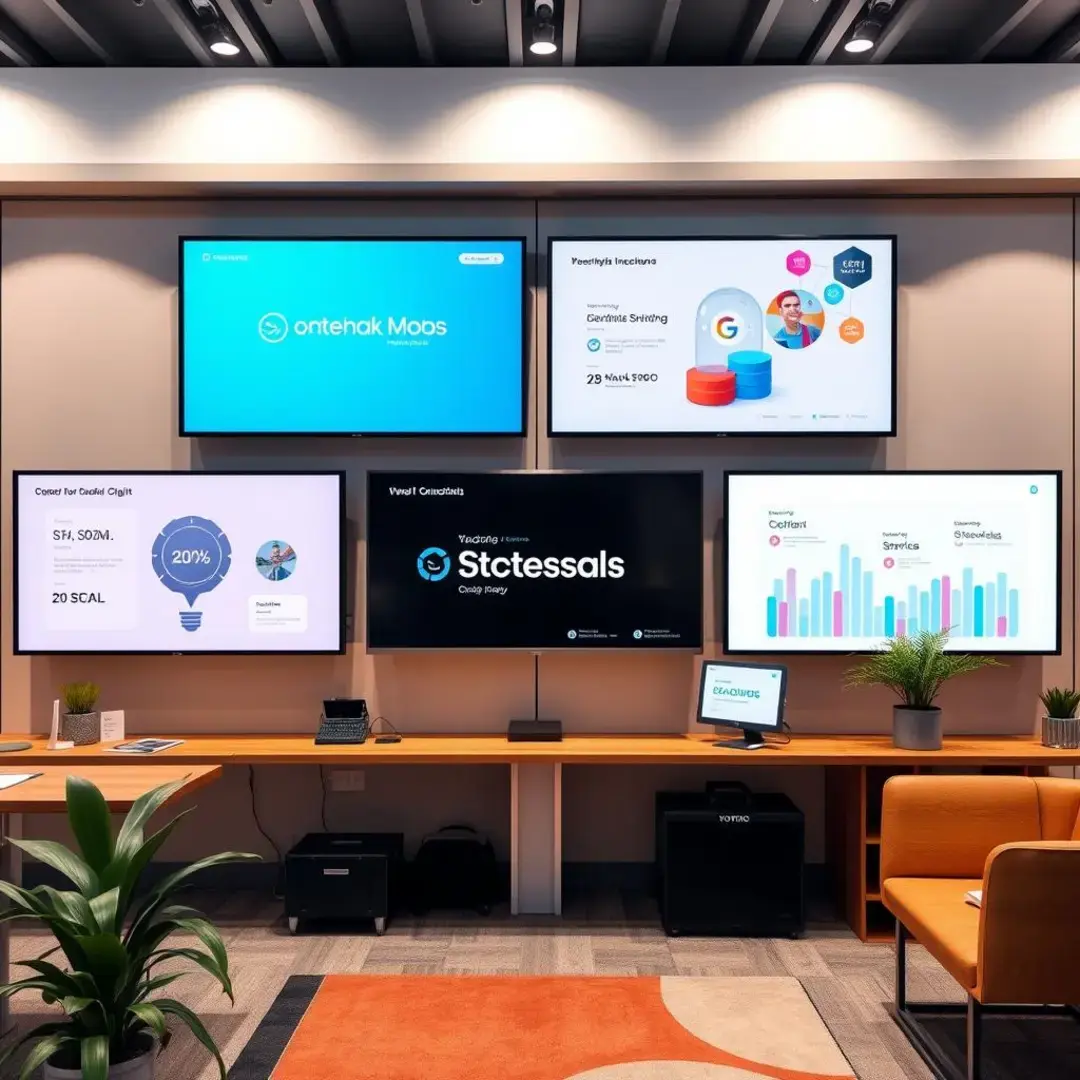Unified ID Solutions: A Closer Look
Understanding the need for unified ID solutions

The demise of third-party cookies
The phasing out of third-party cookies has created a seismic shift in the advertising landscape. Traditionally, these cookies were essential for tracking user behavior across websites, allowing advertisers to serve targeted ads. As a result, the loss of this tracking capability challenges the efficiency of ad spending, compelling advertisers to seek new methods for reaching their audiences. Moreover, with less data available, marketers must creatively strategize to maintain engagement and conversion rates.
Publishers have also been significantly affected by the elimination of third-party cookies. Without the ability to track user behavior, the challenge of monetizing content becomes increasingly complex. Many publishers are now looking at unified ID solutions as a means to continue offering personalized experiences while ensuring compliance with privacy regulations. Additionally, they need to innovate in how they gather insights from their audience while balancing user privacy.
The rise of privacy regulations
With the emergence of stricter privacy regulations such as GDPR and CCPA, companies are now tasked with protecting user data while still delivering meaningful advertising experiences. This shift has compelled organizations to reassess their data collection and usage practices to meet compliance standards. Furthermore, the landscape is continuously evolving, increasing the complexity of navigating these regulations for both advertisers and publishers. The adoption of unified ID solutions can play a pivotal role in navigating these compliance challenges.
Digital advertising now faces considerable challenges surrounding audience targeting, measurement, and attribution. The inability to track users as comprehensively as before means that marketers must explore alternative data sources and methodologies. These challenges can lead to inefficiencies, decreased ROI, and the potential for increased user annoyance if not addressed thoughtfully. Overcoming these hurdles will rely heavily on the integration of robust unified ID solutions that can adapt to these regulatory demands.
The promise of unified ID solutions
Unified ID solutions present a transformative opportunity for brands striving to maintain addressability without compromising user privacy. These solutions aim to establish a reliable way to identify users across different platforms while respecting their preferences and consent. By utilizing anonymized identifiers instead of intrusive tracking, advertisers can set the stage for maintaining effective communication with their audience. This balance between connectivity and privacy could pave the way for a more ethical advertising ecosystem.
Incorporating unified ID solutions can significantly enhance the user experience by delivering tailored content while respecting individual privacy choices. A user-centric approach becomes essential, as it allows brands to connect with their audience meaningfully. Streamlined interactions can lead to increased satisfaction, loyalty, and ultimately, higher conversion rates. In this way, unified IDs not only benefit advertisers and publishers but also ensure that users enjoy the content they interact with without feeling tracked or monitored.
Exploring different unified ID solutions

The Trade Desk’s Unified ID 2.0
The Trade Desk’s Unified ID 2.0 is an innovative solution designed to provide a transparent and user-consent-oriented replacement for cookies. Its open-source nature encourages industry-wide collaboration, making it an attractive option for many stakeholders. This interoperable approach means that various platforms can integrate seamlessly, fostering a community-driven effort in the transition to a post-cookie world. As a result, advertisers are better positioned to retain their targeting capabilities while staying aligned with privacy standards.
The adoption of Unified ID 2.0 has received support from many prominent tech companies and advertising platforms, showcasing a growing consensus on the need for a collective response to cookie deprecation. This collaboration signifies optimism for an effective and unified approach to addressing persistent challenges in digital advertising. The extensive industry support surrounding this solution is also an assurance of its adaptability and robustness, further enhancing its credibility as the advertising ecosystem evolves.
LiveRamp’s IdentityLink
LiveRamp’s IdentityLink stands out with its focus on data connectivity and robust onboarding capabilities. By helping brands connect user data from multiple sources, it enables enhanced targeting across various marketing channels. This exceptional ability to create rich customer profiles allows advertisers to reach their audiences more effectively while maintaining user privacy. Ultimately, these capabilities can lead to improved campaign performance and a more accurate understanding of audience behavior.
Seamless integration of IdentityLink with other leading marketing platforms enhances its utility significantly. Marketers can leverage existing data without completely reworking their strategies, thus enabling a smooth transition into a privacy-first landscape. Furthermore, this level of integration provides a more cohesive view of performance analytics, allowing for finer optimizations. As brands streamline their marketing efforts, solutions like IdentityLink demonstrate the potential for unified ID strategies to simplify the complexities of data management.
Prebid’s SharedID
Prebid’s SharedID emphasizes the need for maintaining publisher control within header bidding contexts. This solution allows publishers to maintain a stake in user identification while fostering competition and transparency. The focus on open-source principles aligns with a growing desire for collaboration among industry players to create standards that benefit everyone. In a complex ad ecosystem, such solutions empower publishers while preserving advertiser functionality.
This unique identification mechanism seamlessly integrates with the broader Prebid ecosystem, creating a unified environment for publishers and advertisers. Through this integration, users are able to benefit from a wide range of ad inventory while retaining control over their data. Such collaborations pave the way for greater innovation in the digital advertising space, allowing more players to devise creative solutions in response to the changing landscape. Ultimately, SharedID embodies the collaborative spirit required for success in the evolving marketplace.
Other emerging solutions
As the landscape of unified ID solutions expands, it’s essential to analyze the various emerging options available to marketers. Each solution offers distinct features and benefits tailored to specific needs within the advertising ecosystem. By comparing them, brands can make informed decisions that align with their strategies and target audiences. Additionally, understanding the nuances between these solutions can uncover opportunities for more effective advertising practices.
Evaluating the suitability of various unified ID solutions for different use cases requires careful consideration of a brand’s unique goals and customer demographics. Solutions that excel in data onboarding may not necessarily provide the best integration options for certain platforms. By assessing the characteristics, strengths, and weaknesses of each option, businesses can hone in on the ideal solution tailored to their objectives. This targeted approach represents a strategic advantage in adapting to the changing dynamics of digital marketing.
Implementing and managing unified ID solutions

Technical considerations for integration
Integrating unified ID solutions into existing marketing infrastructures involves a series of technical considerations. It is crucial for brands to thoroughly evaluate their current systems and align their needs with the features offered by potential solutions. This analysis may include compatibility with existing technologies, ease of integration, and overall implementation costs. As companies move toward broader adoption of unified ID strategies, making informed choices can significantly impact effectiveness and efficiency.
Successful implementation of unified ID solutions across various platforms requires robust collaboration between stakeholders. As different technologies and strategies interact, constant communication among teams is vital to address potential challenges. Assessing performance and user feedback during early stages can provide valuable insights into the effectiveness of these integrations. Moreover, fine-tuning the approach in real time can ensure that businesses are making the most of their investment in these emerging solutions.
Data governance and privacy compliance
Data governance and compliance with an ever-evolving regulatory landscape present ongoing challenges for brands utilizing unified ID solutions. Companies must ensure that all collected data is secure while safeguarding user consent at every interaction point. Transparent privacy policies and user-friendly consent processes can facilitate trust, allowing users to feel more comfortable engaging with brands. A proactive approach to data governance lays the foundation for long-term success in a privacy-focused world.
As regulations like GDPR and CCPA continue to evolve, it’s essential for brands to stay informed and adapt their strategies accordingly. Regular training and updates for marketers and technical teams can help ensure that everyone is aware of regulatory requirements. By embracing a culture of compliance and accountability, organizations can mitigate risks associated with legal ramifications while maintaining fruitful relationships with users. This commitment to ongoing education will be vital for future-proofing advertising efforts in an increasingly complex landscape.
Measuring the effectiveness of unified ID solutions
To measure the effectiveness of unified ID solutions, businesses must identify relevant key performance indicators (KPIs) that align with their objectives. Metrics such as user engagement, conversion rates, and return on ad spend can provide insights into the performance of unified ID tactics. Additionally, businesses should consider tracking metrics specific to user experience, ensuring that interventions enhance rather than detract from audience satisfaction. Properly tracking these KPIs will help marketers refine their strategies further over time.
Continuous analysis and optimization of campaign performance are paramount when utilizing unified ID solutions. By evaluating data collected from various touchpoints, brands can identify patterns and adjust their strategies accordingly. This ongoing optimization is crucial, as the digital landscape is invariably dynamic, and staying ahead requires agility and foresight. Ultimately, businesses that prioritize analysis and optimization will discover greater potential for successful campaigns and improved ROI.
The future of unified ID solutions

The evolving privacy landscape
As the future unfolds, the privacy landscape will likely undergo continual transformation, presenting both predictions and potential challenges for unified ID solutions. The delicate balance between innovative advertising practices and user privacy will be a central theme in discussions among industry leaders. Moreover, the need for effective coordination between stakeholders will be crucial to navigate potential regulatory changes and technological advancements. Proactive collaboration could alleviate some of these emerging challenges, setting a foundation for a sustainable advertising ecosystem.
Industry collaboration will emerge as vital for fostering advancements in unified ID solutions that meet evolving privacy needs. By working together, various stakeholders can share insights, best practices, and innovative tools that accelerate the progress toward common goals. These collaborations can also lead to the development of comprehensive industry standards that enhance trust and transparency with users. Ultimately, a united front will bolster the resilience of the advertising sector in the face of challenges that arise from continuous changes in regulatory frameworks.
The impact on the advertising ecosystem
The evolution of unified ID solutions also heralds a phase of innovation and growth within the advertising ecosystem. Brands will have the opportunity to leverage new technologies and methodologies to reach their audience more effectively. Additionally, the demand for creative strategies in user engagement may lead to a wave of new entrants and innovative startups eager to fill niches created by the absence of third-party cookies. This dynamism can drive ongoing improvements and uplift the advertising industry as a whole.
In conclusion, unified ID solutions are more than a temporary fix; they represent an opportunity to build a sustainable future for digital advertising. By thoughtfully addressing privacy concerns while also providing targeted experiences, marketers can foster stronger connections with their audiences. The road ahead may be uncertain, but the mission remains clear: equip businesses with the tools they need to navigate the post-cookie landscape effectively. As the industry evolves, embracing unified ID solutions will be pivotal in shaping a more responsible and effective advertising ecosystem.


